- NEED HELP? CALL US NOW
- +919995411505
- [email protected]
Tooth Numbering System

1. Zsigmondy- palmer system
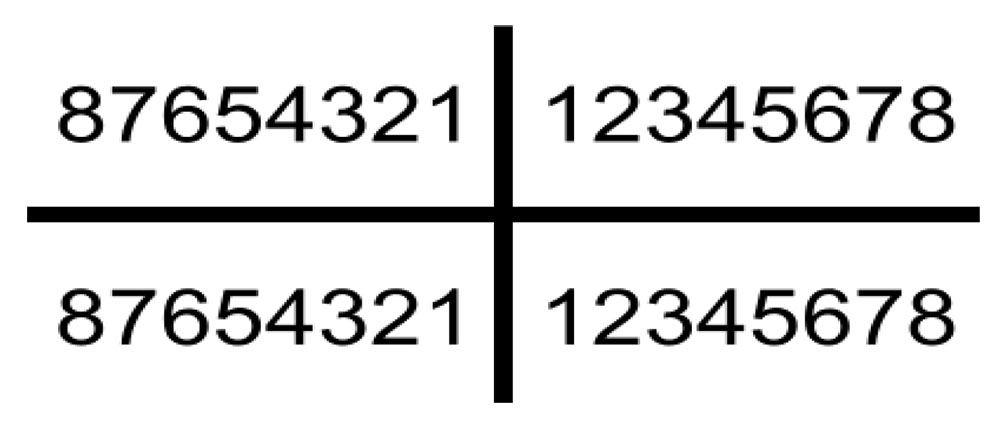
- The Hungarian dentist Adolf Zsigmondy discovered this system in 1861, using a Zsigmondy cross to record quadrants of tooth positions.
- Adult teeth were numbered 1 to 8, and the child primary teeth were depicted with a quadrant grid using Roman numerals I, II, III, IV, V to number the teeth from the midline.
- Palmer changed this to A, B, C, D, E. This makes it less confusing and less prone to errors in interpretation.
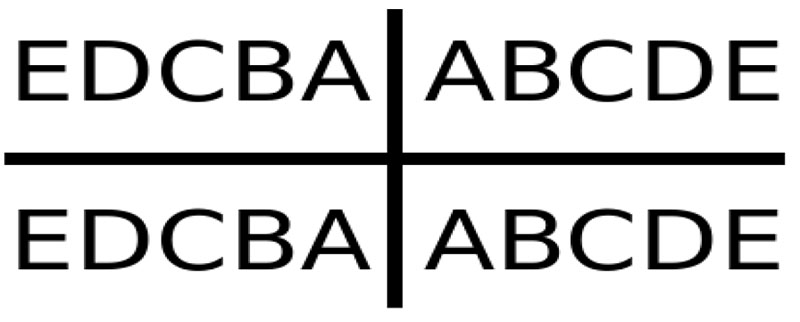
- The Palmer notation consists of a symbol (┘└ ┐┌) designating in which quadrant the tooth is found and a number indicating the position from the midline.Adult teeth are numbered 1 to 8, with deciduous (baby) teeth indicated by a letter Ato E.
- Hence the left and right maxillary central incisor would have the same number,"1", but the right one would have the symbol, "┘", underneath it, while the left one would have, "└".
2. FDI NOTATION SYSTEM
- It is a two-digit system proposed by Fédération Dentaire Internationale (FDI) for both the primary and permanent dentitions. It is also known as ISO 3950 notation system.
- It has been adopted by the World Health Organization “WHO” and accepted by other organizations such International Association for Dental Research.
- In this system, the first number represents a tooth's quadrant and the second number represents the number of the tooth from the midline of the face.
- For permanent teeth, the upper right teeth begin with the number, "1".
- The upper left teeth begin with the number, "2". The lower left teeth begin with the number, "3". The lower right teeth begin with the number, "4".
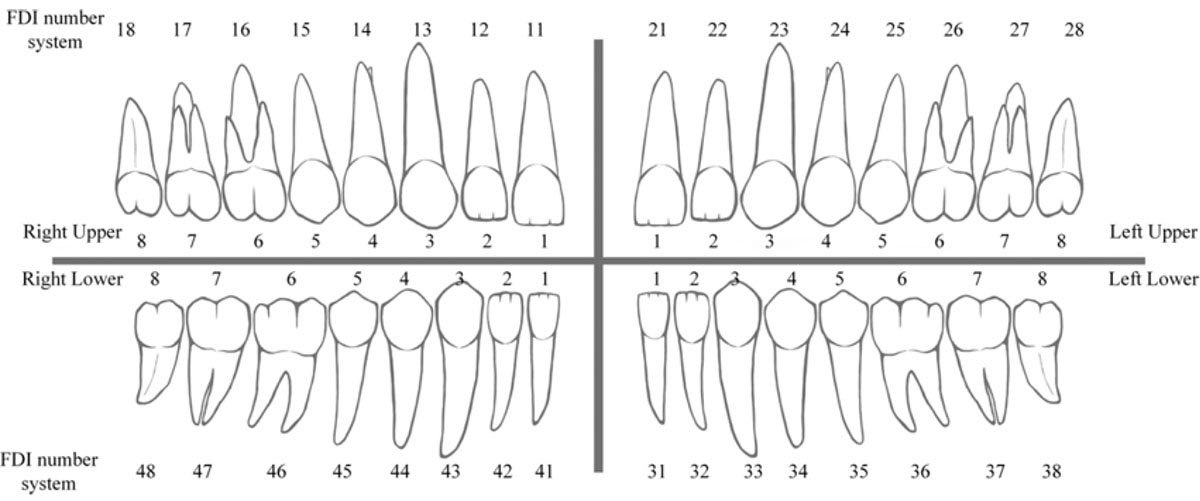
- For primary teeth, the sequence of numbers goes 5, 6, 7, and 8 for the teeth in the upper right, upper left, lower left, and lower right respectively.
- For example: deciduous CENTRAL INCISOR tooth in the UPPER RIGHT JAW, position, would be noted as: 61.
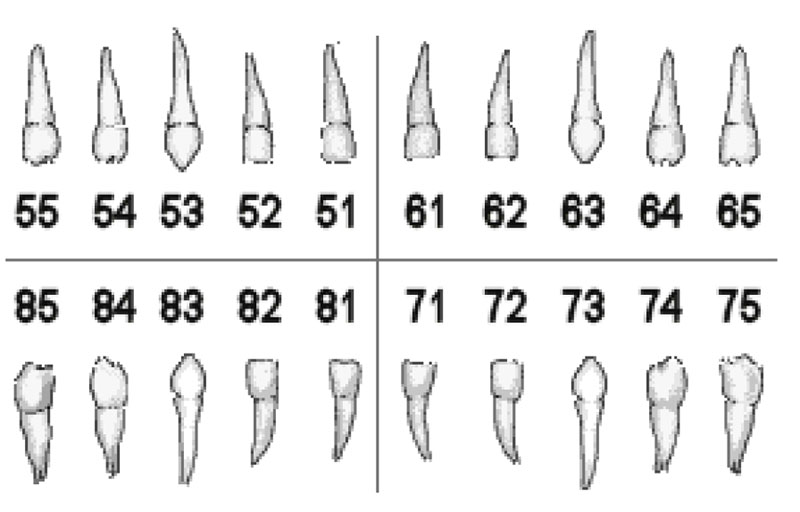
Advantages:
- Easy to remember
- It is very simple, accurate
- Unique number for each tooth
- Verbal communication possible
- Compatible with computer keyboard
- Hence most accepted
3. UNIVERSAL TOOTH NUMBERING SYSTEM
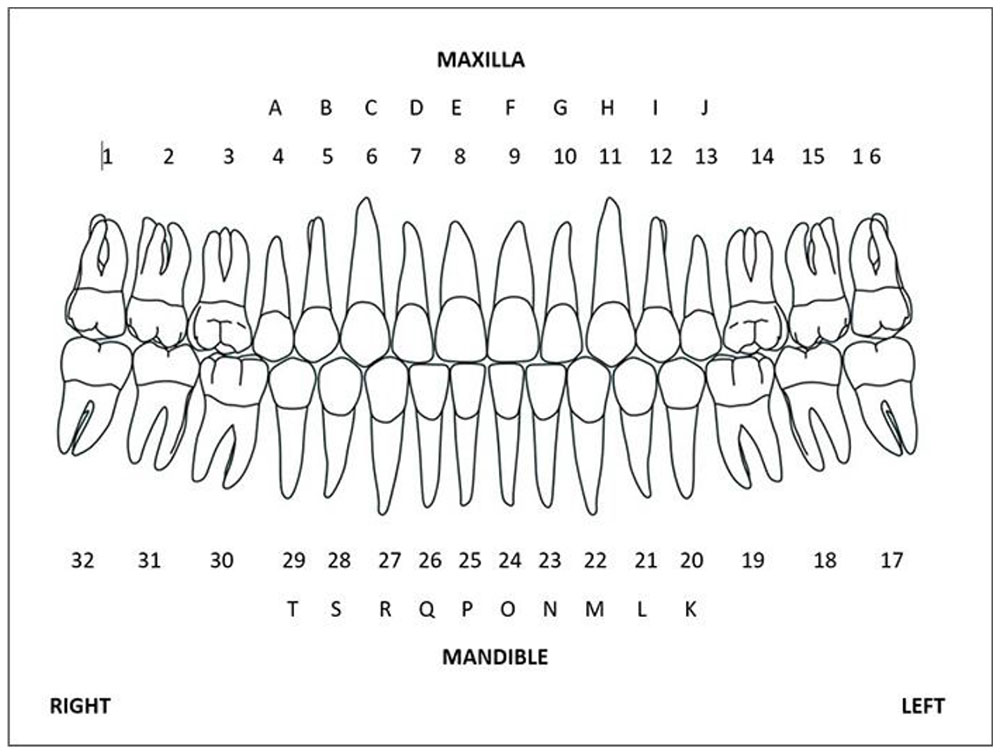
- A universal tooth numbering system was first proposed in the year 1882 by German dentist Julius Parreidt.
- Under this naming system, primary and permanent teeth are named differently.
- This naming system is accepted and approved by the American Dental Association (ADA) and is the most commonly naming system used by dental professionals in America.
- The permanent teeth under the system are denoted using numbers from 1 to 32.
- It again starts from the right side from maxillary third molar being denoted by number 1 and continues across the arch with left maxillary third molar denoted by number 16.
- The numbering is continued with left mandibular third molar which is denoted as 17 and is continued to number 32 denoting the right mandibular third molar.
- Similarly primary dentition is identified by the letters of the alphabet, A-T.
Drawback:
- Fails to classify supernumerary (extra) teeth.
Advantage:
- It follows a sequential pattern of naming teeth and can be easily understood in locating the concerned tooth.
NOTE:
- There are several systems in use in the world, but only a few are considered.
- In 1947, a committee of the American Dental Association (ADA) recommended the symbolic (Zsigmondy/Palmer) system as the numbering method of choice.
- In 1968, the ADA officially recommended the “universal” numbering system,due to difficulties with keyboard notation of the symbolic (Zsigmondy/Palmer) notation system.
Related posts
April 10, 2025
April 9, 2025
April 4, 2025




